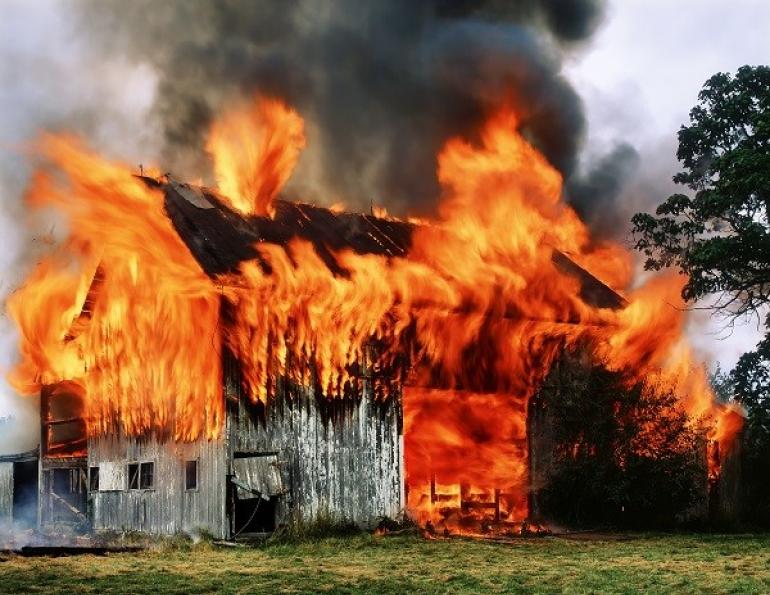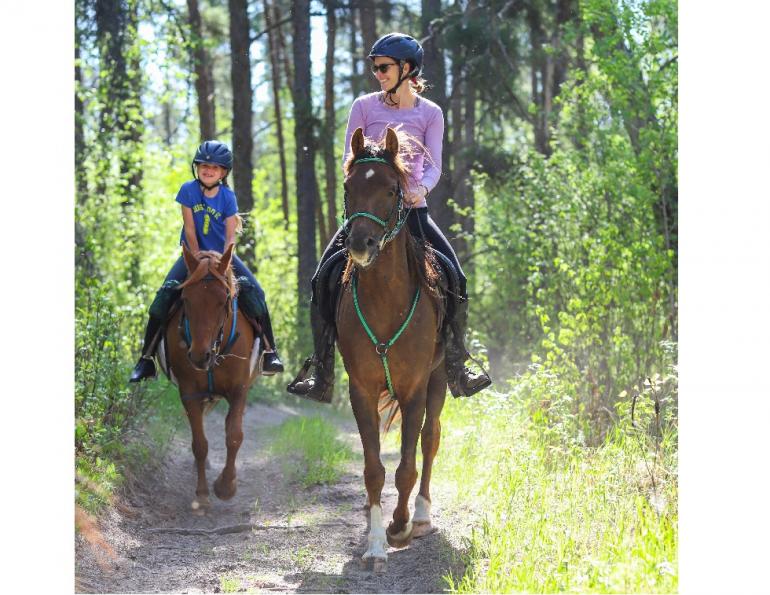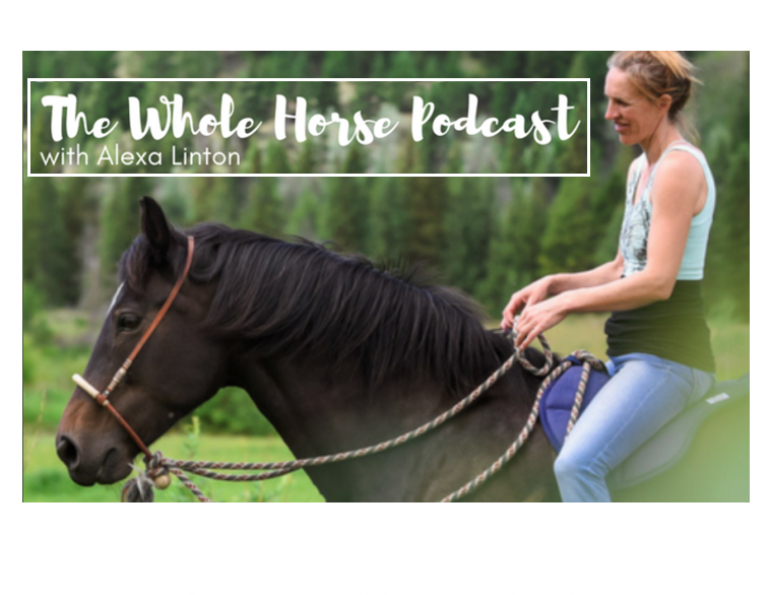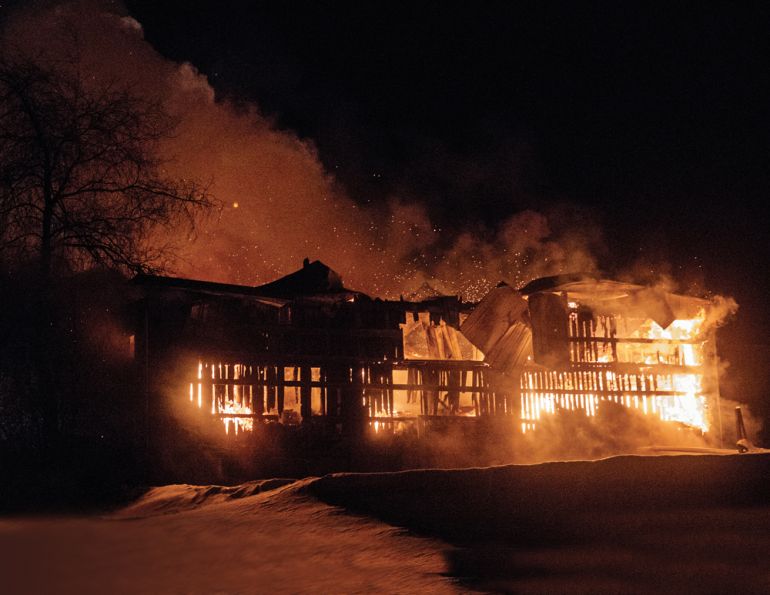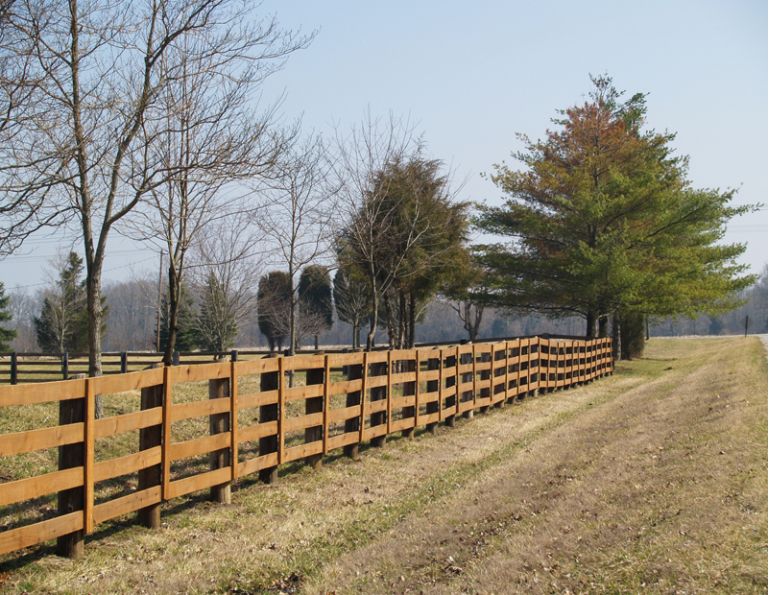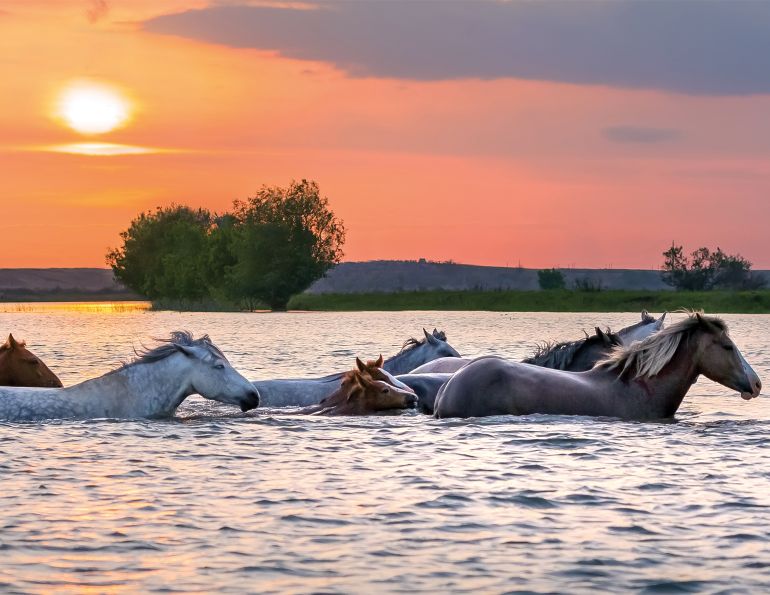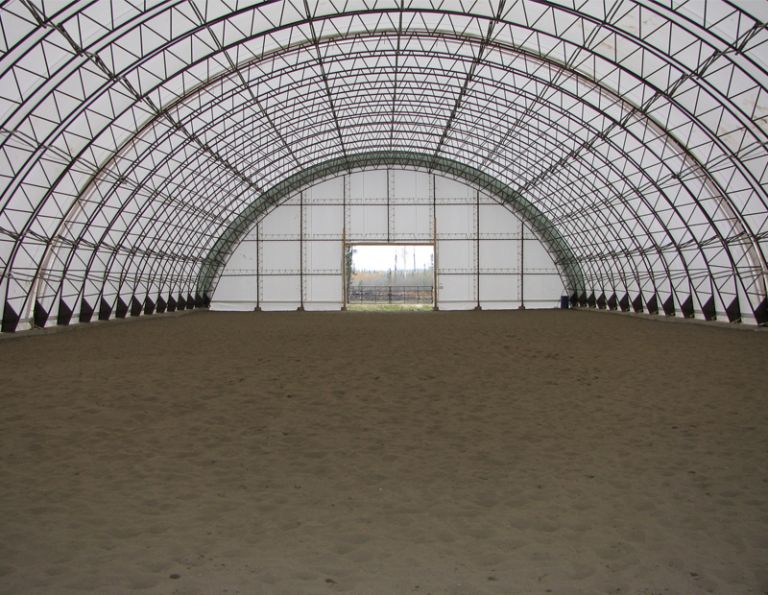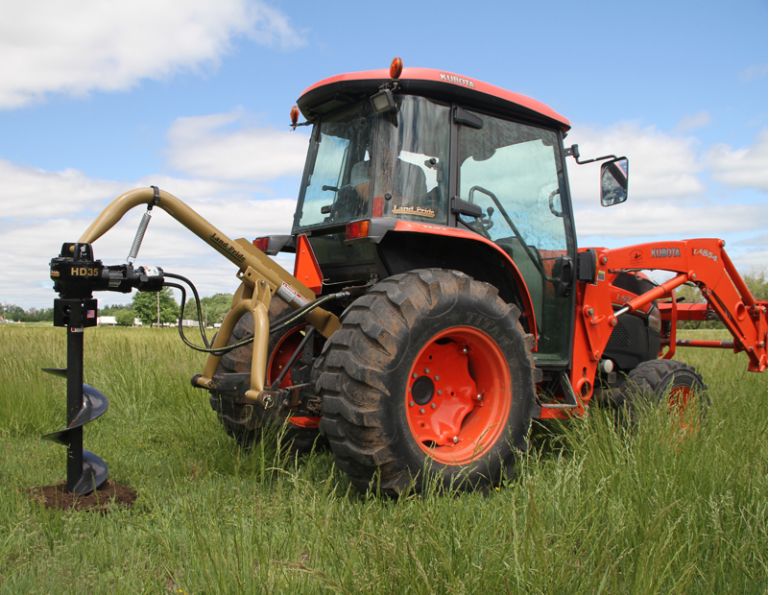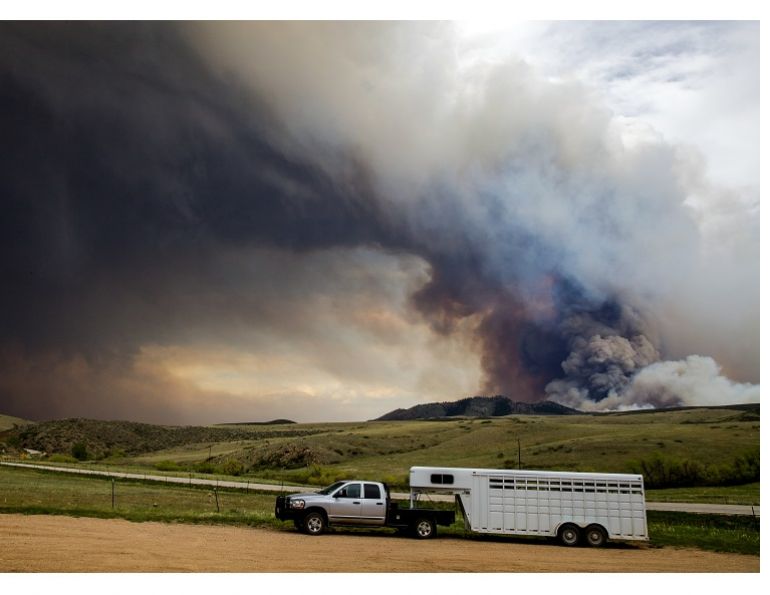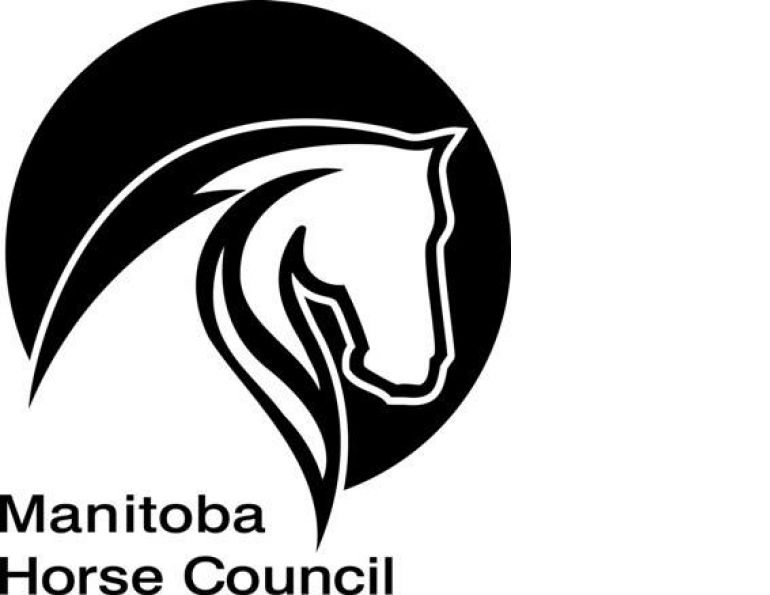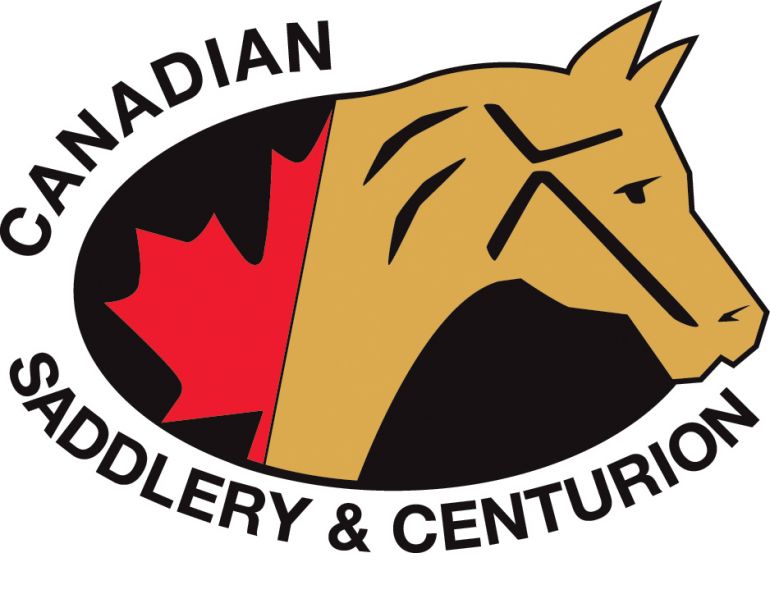Preventing Your Worst Nightmare
By Tanya Bettridge, Perth East Fire Department
Owning and operating any kind of farm is a tough job. The last thing you need is a fire. Whether it’s a fully engulfed barn, an indoor arena inferno, or a tractor that got way too hot and decided to take the drive shed with it, a fire is usually considered the worst possible thing that can happen. Ask any equine property owner/operator who has had a fire and they’ll tell you that there is a lot more at stake than the barn.
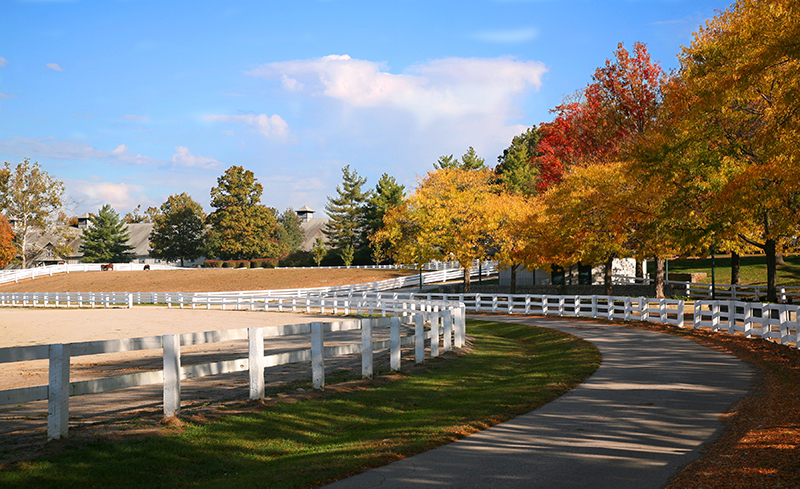
Farm laneways should always be accessible to heavy firefighting equipment with clear right-of-way to reach all farm buildings, free of low hanging wires and tree branches. Photo: ©CanStockPhoto/Markross
How (Why) Did the Fire Start?
When discussing any sort of fire, the first question asked is “How did it start?” Some may consider this to be semantics, because the “how” is always the same – there was an unfortunate combination of oxygen, heat, and fuel. While that question is not exactly helpful, its answer is important.
“WHY did the fire start?” is the question that really needs to be asked. Because this question takes us back to the first answer and which of those three elements should have been prevented, let’s look at some of the most common ways those elements come into play.
Related: Hidden Fire Hazards in your Horse Barn
Fuel – Something has to ignite and feed the fire. Barns are perfect habitats as hay, straw, dust, and cobwebs make prime fuel candidates. Oily rags, crops, grass, and wood are also common elements that can be ignited and continue to feed a fire.
Heat – Common heat sources for farm-related fires are hay and straw (spontaneous combustion), heating systems (everything from heat lamps to radiant tube heaters), hot equipment (vehicles, large equipment, and welding tools), and electrical components (such as wiring and fuse panels). Exposure to lightning, cigarettes, and outdoor fires easily increase the risk of a structure fire.
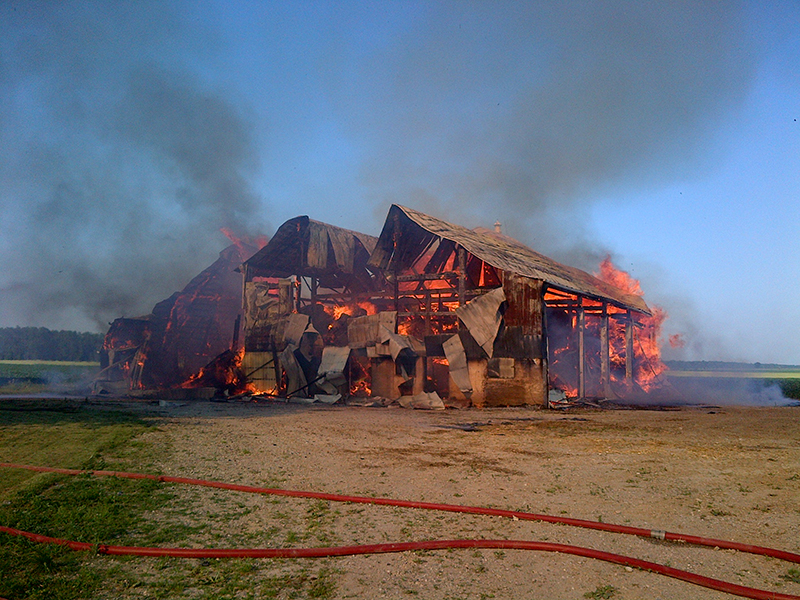
Hay and straw should be properly dried before storing in the barn to reduce the risk of spontaneous combustion. Photo: Perth East Fire Department
Oxygen – The nature of farm buildings is that they were designed, for the most part, to allow ventilation and air circulation. While that is great for barn occupants, it certainly doesn’t help when it comes to preventing or extinguishing a fire. Often, installed fire separation walls are compromised with the installation of wiring, plumbing, and other utility systems.
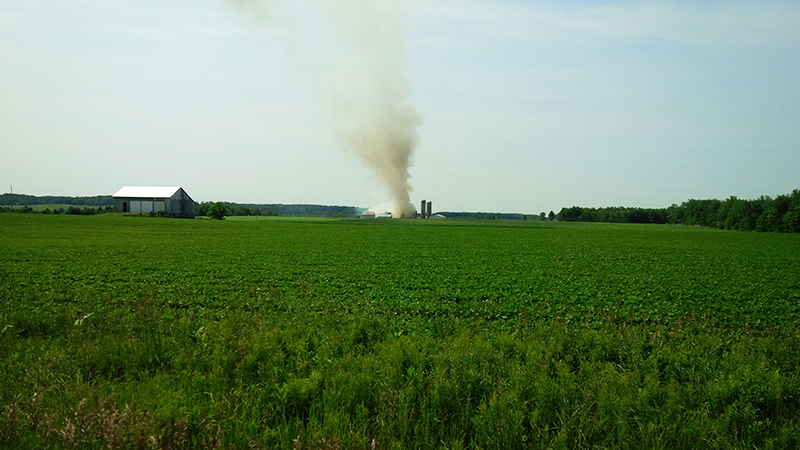
Most barns are located in rural areas and lack fire detection devices, so when a fire starts it can go undetected for a long time. Barn fires spread quickly because barns are designed for ventilation, which makes for a quick and powerful fire path. Photo: Perth East Fire Department
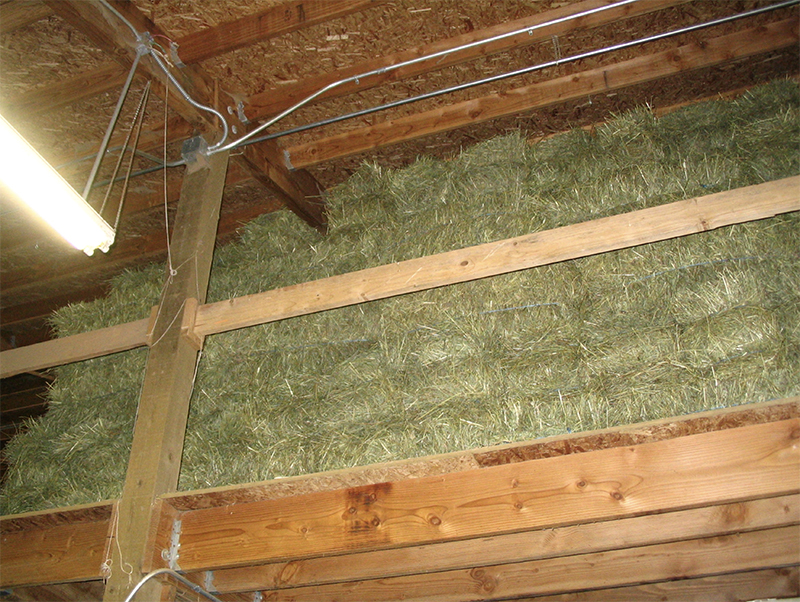
Tightly stacked bales of hay in a loft with minimal ventilation is a textbook fire hazard in a barn. Derrick Coetzee/Flickr
How To Stop Fire Before It Starts
As financial circumstances vary widely throughout the equine community, here are some fire safety tips categorized by affordability:
Lower Cost
- Installation of fire extinguishers.
- Maintenance schedule that includes checking wiring, clearing dust and cobwebs, looking for signs of corrosion, etc.
- Development and implementation of a fire safety plan for your facilities (with the help of your local fire department).
- Development and practice of an evacuation plan for your facilities (this includes human and livestock evacuation – involve your local fire department whenever possible).
- Enforce a strict “No Smoking” policy in and around your structures.
- Ensure all family and staff members are trained on safe use of equipment, especially actions such as ensuring vehicles and equipment are cool before storing, and welding tasks are handled properly and safely.
Related: Fire Safety on the Horse Farm

A no smoking policy should be strictly enforced in the barn and near all flammable materials. Photo: Robin Duncan Photography
Medium Cost – include all Lower Cost items, plus:
- Ionization smoke alarms.
- Regular technical and electrical inspections by your provincial safety authority.
- Removal of all extension cords, and replacement with professionally installed outlets.
- Installation of lightning rods.
Higher Cost – include all Lower and Medium Cost items, plus:
- Sprinkler System.
- On-site water storage.
- Hose cabinets.
- Monitored fire alarm system.
- Video surveillance.
Fire Safety for Everyone
Regardless of your financial situation, there are a number of things you can do to improve fire safety at your farm:
- Do not allow smoking in or around barns or near any flammable farm materials.
- Situate manure piles at least 10 meters away from barns to reduce the chance of combustion.
- Ensure hay and straw are properly dried before storing in the barn and monitor their temperature regularly.
- Keep dust and cobwebs to a minimum.
- For horse barns, leave horses haltered or hang halters and leads on stall doors where they are easily found should evacuation be required.
- Question and/or remove unknown, unlicensed, and unauthorized persons from the premises.
- Regularly check all appliances, wiring, electrical equipment, and heat-producing materials and equipment to ensure everything is in safe, working order.
- Repair/replace any frayed or damaged wiring as soon as it is identified.
- Never refuel engines inside a building or while the engine is running or hot.
- Extension cords should only be used temporarily and should be removed after use.
- Park equipment and vehicles indoors only after they have cooled down.
- Ensure all buildings and vehicles have fire extinguishers and that everyone who frequents your property knows how to use them.
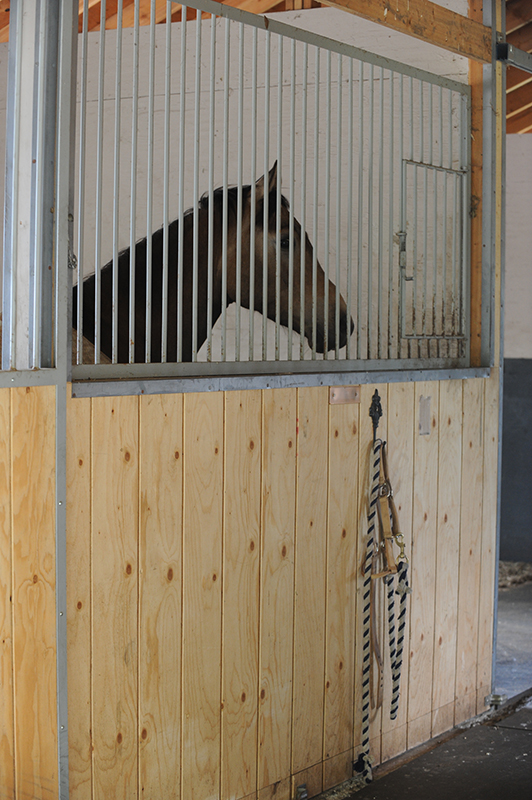
A halter and lead rope should be available at the front of each stall for emergency removal of horses. Do some emergency preparedness training with your horses to get them used to being handled during an evacuation. They should be accustomed to being approached at night with a flashlight and to being led while blindfolded. Wear a large coat and hat with a bulky backpack to resemble a firefighter wearing breathing apparatus. Photo: Robin Duncan Photography
Help Is Available
- Does your facility have a fire safety plan?
- Do buildings containing animals have an evacuation plan?
- Are you, your family members, employees, and frequent visitors trained in fire safety?
- Do they know what to look for when touring the barn or operating equipment and vehicles?
- If a fire started, would everyone know what to do?
Your local fire department can help you answer “yes” to these questions. Most fire departments will have fire prevention or public education personnel who can work with you, and many will do so for a reasonable fee or no fee at all.
If your local fire department doesn’t have a farm fire safety program, they can adopt one easily. For farm fire safety information, or for information on fire department program resources, visit our website at www.pertheast.ca/ffsc.
Let’s all work together to build a farm fire safe community. As every horse owner knows, there’s much more at stake than the barn.
Related: Barn Safety Tips: Plan Ahead for a Positive Outcome
Related: Hay Storage Strategies for Safety & Savings
Main photo: ©iStockphoto/JoeDPhoto



